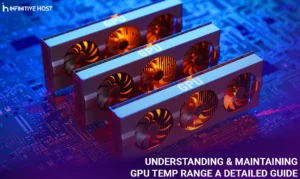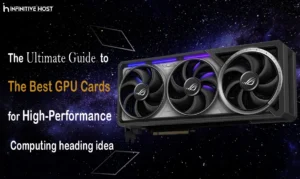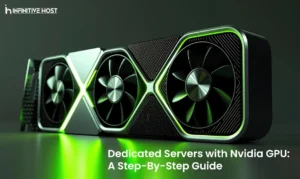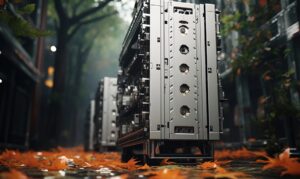Optimizing GPU servers can perform multiple computations, including a combination of hardware and software strategies. It helps the application, which leads to faster performance. GPU dedicated servers fully leverage their advanced computational power. GPU dedicated servers are resource-intensive. They include various elements such as 3D engineering graphics, Gen AI workloads, and more. GPU optimize server performance with the deep learning module. The rise of deep learning is generated by improving the accelerator. Due to these unique features, GPUs are the most widely used accelerators for deep learning applications. A GPU is similar to a CPU. It is one of the most important components to train with the neural network model. NVIDIA Tesla is good for deep learning. This NVIDIA improves the performance of deep training models at a large scale, whereas GPU deep training model performance is the lowest. With the use of selecting and configuring hardware, Optimizing software settings, and utilising performance monitoring tools, you can improve the performance of the GPU Dedicated server for the deep learning training module.
Tips and tricks to get the most out of your GPU servers
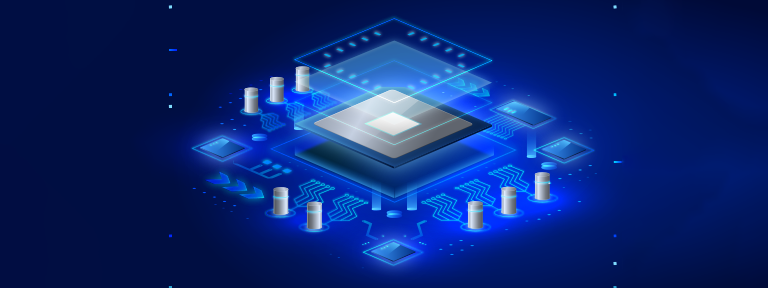
Optimizing GPU Server known as the best GPU Dedicated Server that involves various techniques and best practices for deep learning modules, in which there are various techniques that connect with hardware, software, and system configuration. There are a multitude of tips and tricks to maximise the GPU Dedicated server’s performance:
- Hardware Utilisation: In this process, the GPU Dedicated server works on the memory management process and the monitoring hardware process. They monitor the hardware utilisation process and run multiple processes on the same GPU server process, in which the tools including NVIDIA MPS helps manage the multiple CUDA applications. This process allocated the memory on the GPU Dedicated servers and used the data format that is used in the GPU server operations.
- System Configuration: File optimization in the I/O process to reduce the data loading and optimise the data pipelines by using tools like TensorFlow.
- Software Optimization: Use the frameworks that are optimised for the GPU Dedicated server process, such as TensorFlow, PyTorch, and MXNet. Install all the GPU versions in these frameworks. Use the process that increases the training speed and reduces memory usage. Different parts of the model run on different GPU Dedicated servers.
- Distributed Training: GPU Dedicated Server uses scalable architectures to support the distributed training process, such as the Tensorflow distributed package. Simulating the large batch size with less memory can improve the training stability and performance. This simulation can be done by the accumulation process.
- Advanced Techniques: Merge the multiple operations into a single kernel to save time and reduce the overall load on the kernels. Utilise the data processing and loading to overlap the data transfer, which maximises the GPU server performance and saves idle time.
- Regular Maintenance and Updates: Regular maintenance and updates to the GPU firmware improve performance and fix all bugs. It saves valuable time. You can use the monitoring tools to track the system and check for any potential issues.
Deep Learning Module: How does deep learning work?

Deep learning modules transform in the field of artificial intelligence and it teaches the computers to present their data in the human way. It is the subset of machine learning which is based on the neural network. The term deep refers to the multiple layers of the network. Deep learning is used in multiple applications such as image recognition and natural language processings. There are three types of Deep learning Models like convolutional neural networks, recurrent neural networks, and transformer models. If we talk about machine learning, we can say that deep learning is the part of machine learning which plays an important role to optimize the GPU Dedicated Servers. Deep learning requires machines to make sense of unstructured data while machine learning is work with structured and labelled data. Deep learning works on the various numbers of the applications such as:
- Image recognition: identify the objects and features in images.
- Natural language processing: Help to understand the meaning of text
- Finance:Help to analyse financial data and make predictions about market trends
- Text to image: Conversion of the text into images
Common pitfalls and how to avoid them in deep learning tasks

Deep learning tasks vary between different numbers of applications. These modules work in the fields of AI and machine learning. These ML and AI technologies will be the backbone of the GPU Dedicated server in the future. There are some common pitfalls and steps in which we explain how to avoid or resolve them:
Using Low-Quality Data:
- Pitfall: This is the most common drawback for deep learning tasks: using low-quality data and mentioning the data limitations when training AI models, which gives poor performance and unreliable results.
- Solution: You can use high-quality data by carefully evaluating and scoping it so that it is easy to train the AI model.
Insufficient Data:
- Pitfall: Training the AI model with insufficient data gives unreliable results and has a bad impact on performance.
- Solutions: Use pre-trained models on similar tasks and generate the synthetic data.
Using Too Large or Too Small Datasets:
- Pitfall: The size of the data impacts the deep learning training model.
- Solution: It is important that we use the Limited DataSet as per the requirement.
Using Same Model Multiple Times:
- Pitfall: Use one model multiple times, which creates poor results and gives unreliable results.
- Solutions: Instead, you can use a variety of modules that give the best result and output.
Overfitting:
- Pitfall: It performs well on the training data but does not know how to derive the unseen data. The main reason behind this is too many parameters, too long training, or not enough training data.
- Solution: Implement techniques for batch normalisation, monitor validation performance, and stop training when performance starts to degrade.
Underfitting:
- Pitfall: It occurs when the model fails to capture the basic structure of the data, which results in poor performance on both training and validation sets. This can be caused by insufficient training or a simple architectural model.
- Solution: Provide the proper training of the model that enables us to learn the basic data structure.
Slow Training:
- Pitfall: Slow training for large models and datasets can be time-consuming.
- Solutions: To speed up the training process, train the model on smaller batches of data.
Conclusion
Optimize for GPU Servers gives you the correct instance that meets your specific requirements. Select the best GPU dedicated server that can give the best performance result and complete all the tasks on time. Infinitive Host is recognized as one of the best GPU dedicated servers that can improve the efficiency and performance of the GPU servers. If you maximise the GPU Dedicated server performance for the deep learning module, then the GPU Dedicated server gives you the highest performance possible, accelerating your deep learning workloads and research. In the end, we conclude that you should choose the best GPU dedicated servers that improve your efficiency, perform fast, and handle multiple calculations in the most efficient way possible.
Read More : The Future of GPU Servers in AI and Machine Learning




